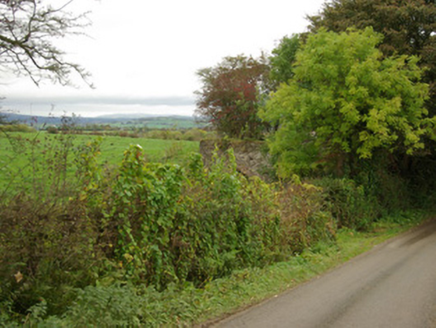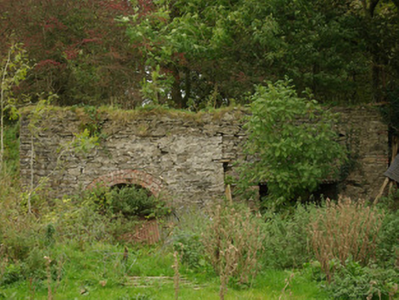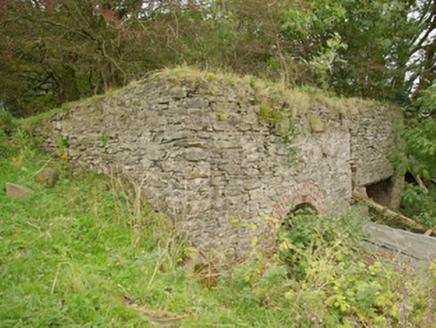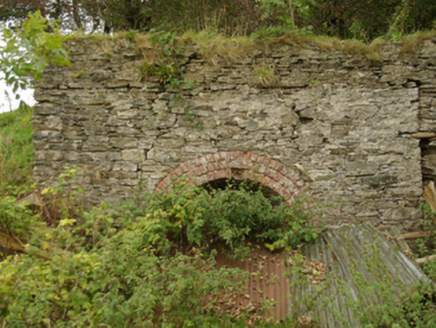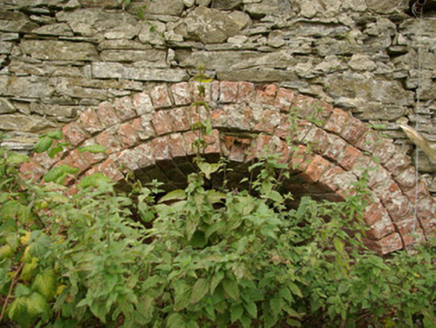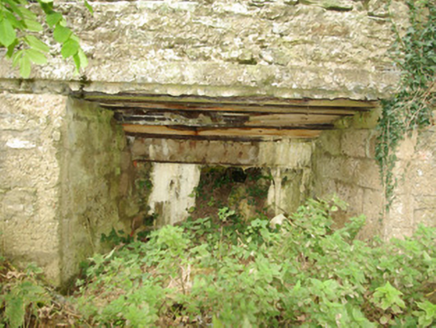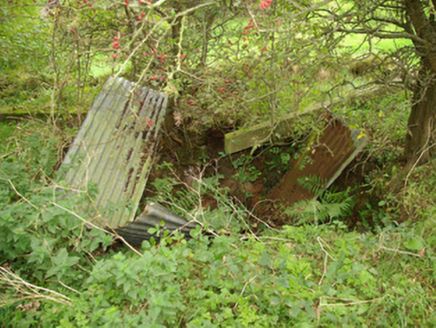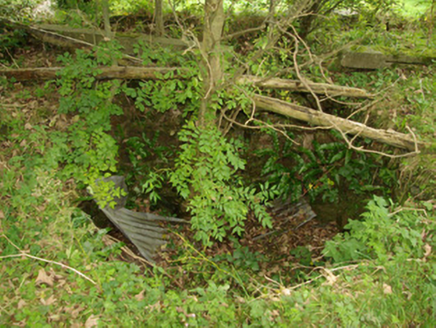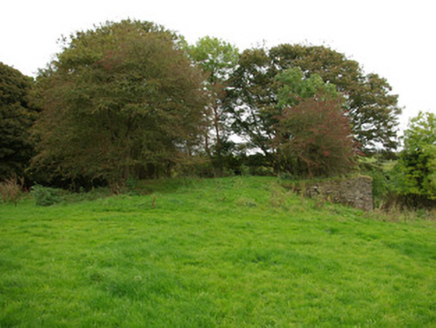Survey Data
Reg No
40907933
Rating
Regional
Categories of Special Interest
Social, Technical
Original Use
Kiln
Date
1840 - 1900
Coordinates
226309, 390905
Date Recorded
03/06/2008
Date Updated
--/--/--
Description
Pair of freestanding single-bay lime kilns on square-plan, erected c. 1860 and c. 1880, and altered c. 1920. Now out of use. Constructed of rubble stone masonry. Segmental-headed opening to front elevation (south) of kiln to west, the former oven aperture, having three courses of red brick voussoirs to arch. Former loading chamber on ovoid/circular-plan to the north having rubble masonry construction; chamber now partially collapsed. Altered square-headed opening to kiln to the east having blockwork construction to oven aperture with concrete lintel over. Built into hillock adjacent to small rural road to the south of Castlefinn. Earthen embankment to rear, formerly giving access to loading chamber. Former quarry located a short distance to the north-west.
Appraisal
This interesting pair of former lime kilns, probably erected during the second half of the nineteenth-century, survive in relatively good condition and retain much of their early character. The kiln to the west with the segmental-headed oven aperture with red brick voussoirs is particularly well-preserved although the slightly later kiln adjacent to the east has been altered with the addition of blockwork walls and concrete lintel, and appears to have been in use until relatively recent times. These features well-built using local rubble stone masonry and are appealing and unassuming element of the agricultural/industrial and social heritage of County Donegal. The embankment to the rear was built/modified to allow for the easy loading of stone through an opening in the roof structures, while the aperture to the front was used to fire the oven to burn the stone and produce lime. Lime kilns appear to have come into popular use in Ireland during the eighteenth century and were a very common feature in the rural landscape up until the first decades of the twentieth century. They were used to burn limestone to produce lime, which was used as an agricultural fertilizer and spread on agricultural land, or in construction as a mortar and a render. Lime was also used for lime-washing buildings, particularly farm buildings, as it was regarded as a cleansing agent at the time. This small-scale kiln was probably in use by a local farmer and probably provided lime to small farmers etc. in the immediate environs. Small rural lime kilns started to go out of common usage during the late nineteenth-century with the advent of industrial-scale lime production facilities and improvements in the transport network, particularly the development of the railways. These simple kilns are an interesting feature in the rural landscape to the south of Castlefinn, and are integral elements of the built heritage of the local area.
